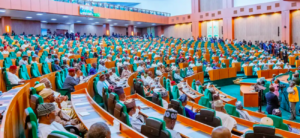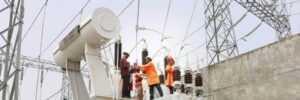 TVC N. The nation’s total indebtedness to foreign and local creditors now stands at N19.16tn, the Debt Management Office has said. This is N1.8tn increase from the N17.36tn recorded at the end of December 2016.
TVC N. The nation’s total indebtedness to foreign and local creditors now stands at N19.16tn, the Debt Management Office has said. This is N1.8tn increase from the N17.36tn recorded at the end of December 2016.
As of March 31, 2015, the country’s total debt stood at N12.06tn. This means the debt level increased by N7.1tn in two years. Segmenting the national debt, the DMO put the Federal Government’s domestic debt at N11.97tn. Two years ago, as of March 31, 2015, this component of the debt burden stood at N8.51tn.
This means that within a period of two years, the Federal Government has borrowed a total of N3.46tn from domestic creditors. This shows that the domestic debt of the Federal Government has increased by 40.71 per cent.
In the same period, the country’s external debt (for the federal and state governments) rose from $9.46bn to $13.81bn. This means that within the two-year period, the country’s external debt rose by $4.35bn or 45.98 per cent.
The external debt component, however, has been affected by exchange rate variations as the last two years have witnessed noticeable changes in foreign exchange rates.
According to the DMO, the official exchange rate of N306.35 to $1 was used in calculating the country’s external debt for March 31, 2017, while the official rate of N197 to $1 was used in determining the foreign debt for March 31, 2015.
The domestic debt component of the states stood at N2.96tn as of March 31, 2017, up from the figure of N1.69bn at the same time in 2015.
This means that within the period of two years, the domestic debt of the states rose by N1.27tn or 75.15 per cent.
Amidst drying revenues from oil and gas, the government has in the last two years increasingly depended on borrowing even to carry out routine responsibilities.
Although foreign debts are accounted as cheaper than domestic debts, the government has increasinglydepended on domestic sources of borrowing as foreign donors place more stringent conditions before granting credit facilities to the government.
To raise the required funds from the domestic debt market, the Federal Government has been active in the market with a number of instruments, including FGN Bonds and the Nigeria Treasury Bill. It recently floated a new instrument known as the FGN Savings Bond.
The International Monetary Fund had recently projected that Nigeria’s indebtedness would climb to 24.1 per cent of the nation’s Gross Domestic Product by 2018. It said that the country’s current indebtedness would have reached 23.3 per cent of the GDP by the end of 2017.
The country closed 2016 with a debt to GDP ratio of 18.6 per cent. By the end of 2015, Nigeria’s debt to GDP ratio stood at 12.1 per cent, according to the Bretton Wood institution.
Nigeria’s GDP for the year ended December 31, 2016 stood at N67.98tn, according to the National Bureau ofStatistics.
Going by the projection of 24.1 per cent for 2018, within three years, the nation’s debt to GDP ratio would have gone up by 100 per cent, from 12.1 per cent in 2015.
Although Nigeria’s debt to GDP ratio is considered among the lowest in Africa, some experts have expressed worries about the increase in debt accumulation in recent years, while others are worried about the quality and utilisation of the debts.
The World Bank recently expressed concern over the debt servicing to revenue ratio, saying that reduced earnings might render the country’s debt unsustainable. A total of N1.84tn was provided in the 2017 budget for debt servicing.
Nigeria’s debt profile is dominated by local debts, which are characterised by high interest rates. Efforts are being made to secure more foreign debts and reduce the exposure of the Federal Government to the domestic debt market.





